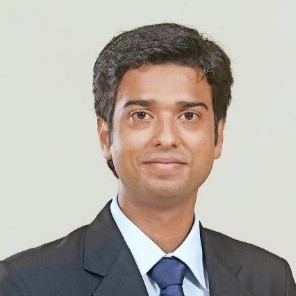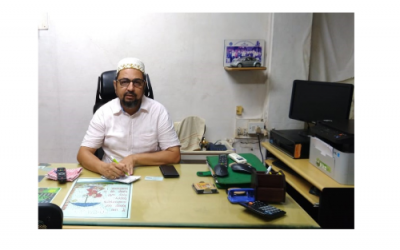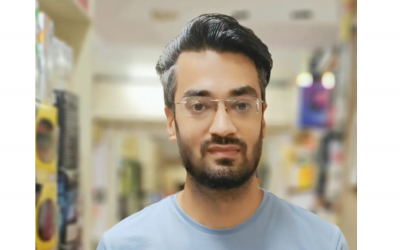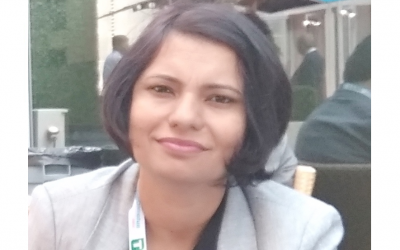Mr. Akshay Shekhar, is the Co-Founder of Kazam EV, with a Vision of creating Awareness and Ease of Electronic Vehicles in India, he and his Co-Founder Mr. Vaibhav Tyagi Started a new Venture called Kazam EV Pvt. Ltd.
Kazam is building Asia’s largest smart electric vehicle charging network. Kazam has its proprietary IoT-enabled & affordable charge points, which hosts (apartments, hotels, malls, offices, Mom&Pop stores) can purchase to create a private or public network of EV chargers for its EV owners. Hosts can wish to monetize on energy that is consumed on their network by using Kazam’s SaaS platform. Kazam’s mobile app for EV drivers supports discover, charge & pay through the app for an unmanned experience for the host
In a recent interview with Mr. Ravdeep Singh Chadha (Editor-In-Chief of Auto Insider), Mr. Akshay talked about his Mission, Vision, Big opportunities in EV Industry, and some suggestions for fellow start-ups on how to make it a win-win situation.
About the Interviewee
Ravdeep: Please tell us Something about your professional journey and what made you start Kazam?
Akshay: Kazam was started by me and Vaibhav, we both met each other in Mexico and prior to this Vaibhav is from IIT Roorkee and then he went on to work with A2Z infrastructure. He didn’t like what he was doing there and quit that very fast and became a teacher with Kidzee and was teaching Maths. He was desperate to crack ITG and after doing that for a couple of years then he said I want my MBA, then he went on to do MBA from XLRI and that’s where he was given an offer to work with Pepsico.
About me, I did my graduation from the University of Pune, and I immediately went on to do my MBA from NITIE and during this course itself I had my first venture. This was in the furnishing space. It was called “Furnished” and we had made an augmented reality and Technology where interior designers could help their clients visualize how interiors are done. So I was just like this 22-year-old guy who was running this company back then and then I did that for around 16-17 months and sold that company out and later on joined PepsiCo. I already had an offer from PepsiCo from Campus but then even though it was like 1 or 1 & 1/2 years later they were happy to take me in. So when I joined I was like a mentor to Vaibhav and we met in a plant and that’s where we realize that we both have the same thought process and we also have similar insights and visions that we want to build something on our own.
We kept in touch, Vaibhav went on to build a company called Zunroof. He was managing the P&L for South of India, It was a Solar Rooftop company. That’s where the idea of doing electric vehicles and their charging infrastructure came into the picture because he was in the energy sector and he knew that this is going to come next.
This happened in 2019-20. So in 2019, he was with sunroof and by the end of 2019 he reached out to me saying that this case is going to pick up and Let’s start. Then we started talking about this. I was in Godrej at that time and I was handling new product launches for Africa, the USA, and the Middle East businesses. So I was traveling the world and he was here and understanding the space.
Later on, what happened was after putting on rooftops Solars, he moved into something called developing the IoT products. So they were developing smart meters and some other products like water purifiers and everything. So he realized that this is all coming together, it’s like destiny coming together. So he again reached out to and he had a couple of friends who also wanted to do this and he reached out to me and then back in 2020, he said, let’s do this and so I came back to India from the US because of COVID and then we said let’s start doing some market research and so in around August he started a YouTube channel 10-12 months back and this was called as “Electric Vehicle News India”. We started talking about Tata Nexon, we started talking about Subsidies, We stopped it and started talking about what is a Tech mark, we started talking about why people are now comparing petrol versus electric, not how to compare diesel Tech. So we started talking about all these things and we started getting a lot of hits on a YouTube channel. Then we realized that we should do something big with this and then we realized that two Wheeler and three Wheeler is 98% of the market in EV and this space is being developed in India. India is the one that’s going to develop this technology.
Maybe Four Wheelers are made in the US and also in China. Similarly Two Wheeler and Three Wheeler, India is going to make it for the World. Even in the current stage, even though we are working with patrol vehicles “Hero” is the biggest Two Wheeler manufacturer in the world and they export everywhere and the same phenomenon is going to happen for EV Two Wheelers. So we thought that if India is developing this then we need to make charging stations for this market, which is going to be even in the future, 80% of the whole thing.
So then we went out and we did some market research and we found out that companies like ABB, Siemens, Delta, etc all of these big names have made stations for Four Wheelers. Because 4 Wheelers have been there for the last 10 years, 2010 Tesla came into EV And they have built technology for it. But nothing for Two Wheelers or Three Wheelers. Just imagine you are buying an Electric Vehicle for 1 lakh Rupees for 2 Wheeler and you have to buy a charging station for 70-80 thousand Rupees which is 20% of the cost of the vehicle. So we thought that we should do something within the 5 to 10% bracket of the vehicle. As we all are engineers, we called people from IIT Roorkee, we got people from my college and then we started building this technology somewhere around November and by January we had the product ready. Then we went to the website and we started launching it. Around February when we started selling it and we already had more than 100 plus charging stations already installed in the country.
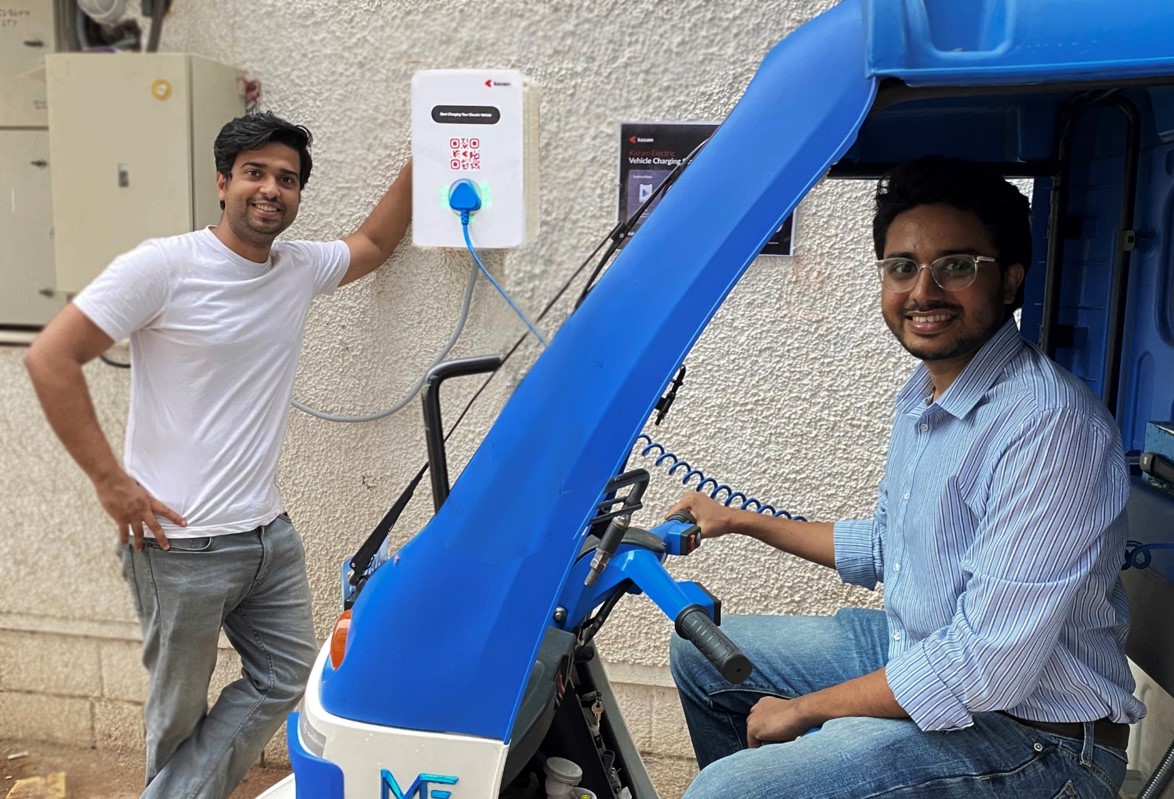
An EV Charging Station
Ravdeep: So tell us something that motivates and inspires you the most?
Akshay: Always keep learning and be curious. That is the only thing and if you’re able to do that. Ask people, if you don’t ask, you never know what magic you can create. These 3 things you should remember.
Ravdeep: Tell us about 3 highs and 3 lows in your life.
Akshay: So as a person, I’m extremely ambitious, so all my highs only last for 10 seconds or not more than that. For Example, when the funding money hit the bank account I opened it and never saw so much money in my account altogether. But then that feeling was only there for 10 seconds and then we started thinking about what to do next and how to ensure the expansion of the project.
So one major thing was having that success, having investors and people believe in your vision. Second high, I would say was when I got into that whole culture of my MBA degree and then getting into PepsiCo and starting my venture, that whole phase has transformed me as a person because I don’t think I would have been here if I never knew the management skills that I built in when I was 21-22 years old and getting into the corporate world. So this is the second high for me. I don’t know what the third high is for me, but I think I’m just happy that I’ve been to more than 10-12 countries now in the last few years. I haven’t pent but I think around 20 because I’ve visited half of Africa and I’ve been to almost all the continents, so I get cultural bits and I’ve been able to learn a lot because of wherever I’ve been working.
Lows, I would say there have not been many lows in my life because I never really concentrated on those lows. It will drive the energy away from us. So I scored very little in my 10th & 12th Boards, but I was like OK, it doesn’t matter. I think the only low that I had was I’m an athlete, a runner and when I was participating for my national team when I was running and just before that I felt sick and at that time it was very devastating because I couldn’t compete well and I couldn’t win. So, that was the lowest for me.
Ravdeep: What message would you like to send to your fellows in the industry and if any valuable learning to be shared?
Akshay: The learning is that this is a very nascent industry and it is not going to grow if you’re going to create walled gardens. It is an industry that is going to replace oil and gas and oil and gas contribute around 6-10% of GDP. So considering how big this industry is and one person or one company cannot do it, we have to collaborate extensively and ensure that we grow together, and only then we will see the evolution happening and growing. That is something that we all should work on.
About the Company
Ravdeep: We would like to know a brief about the company.
Akshay: Kazam operates across three offices as of now. We have an office in Bangalore, Pune, and Delhi. And we have service across India right now in terms of wherever we get vacant service centers. Kazam is hardware to software in the charging infrastructure business we give hardware ranging from ₹5000 – up to 50,000. While ₹50,000 is for extremely fast charging and we have a range of 7 products in it.
Second, we gave software integrations for individual customers, we gave them the app which you can download freely on the website. For commercial people, we give an API integration that gets integrated onto their dashboard and they can see and operate everything. We also give white label solutions for bigger brands so that they can have a solution that they can pass on. It’s like a Co-branding exercise and then there is a free learning tool that we give which is within the app, you have the Community page where you can interact and ensure that we learn more about electric vehicles.
Ravdeep: From how many years Kazam has been in business and what’s the size of the icons?
Akshay: It was an idea of the YouTube channel which started in August last year in 2020 and then now we have been actually got incorporated in December 2020 and so it’s been around 6-7 months and our headcount is almost close to 3-35 people, if you put contractual and noncontractual put together across all the three offices in India.
Our headquarter is in Bangalore and I and Vaibhav operate from here. And others are the regional offices.
Ravdeep: How much is the cost of 1 product and is it 1 product or 1 station?
Akshay: Our product is a station that contains 1outlet, and this is a dummy piece and this is going to be the future product. This is even cheaper than what we have on the website. So our price range will start somewhere around Rs. 5000/-. So from ₹5000/- you can start buying charging stations and this will be one station where you can plug in the socket and start charging your EV and it is connected to the Internet all the time and you will get to know that how much electricity it has consumed. A Small shopkeeper can also install this and go back to the PCO days where they used to put coins and People could make calls from it. He gets additional income from it. The same logic applies to the Kazam EV station also. And of course, it will give him some additional income also.
So we are generating micro-entrepreneurs in the individual space and the business space we tell them that you will get all this data and it takes in everything and as an employer, you can easily trace that how much sales contribution is done by an Individual employee.
If you have a Kazam App and you have an Electric Vehicle It will also show you when it is going to dry out and which all Kazam Charging stations are there near to your network where you can connect and charge.
Ravdeep: So this happens only on the application?
Akshay: Yes, we have an application on Google Play Store and Apple App Store. So you can download and start using it. What we’ve done is we’ve combined two things, We’re combining our YouTube channel where we are educating people about EV and second is, we are also combining the whole, hardware, and software that we have built into the app. So if you go to the app there is a community section where people come and chat with each other, discuss EVs. Before this, it was all on WhatsApp, but we want to give it a kind of richer feeling. We were also part of a few groups on WhatsApp where people used to complain about their issues related to their automobiles. So I just thought that it should all get together and people can then revisit it and see what is happening and everything. So there is a community page in the app where people can interact with each other and they can know about different bikes they can compare between two different bikes or 3 Wheelers or even 4 Wheelers and understand the differences among them. What all Accessories could be used with Bikes and how others have modified their bikes. So these are the things which you get to know from the community Page.
Second is because you’re using the app, you will also know which charging station is the nearest to you and you can quickly navigate to that and you can start charging. And the third thing that we do is, we have given open software for anyone to convert their hardware into an intelligent Kazam charging station. So for example, If you don’t have the Kazam Charging Station but you are using someone else’s login, you just have to install our application and plug it into the Hardware Device, so it will start coming onto our platform where you can do payment together, you can discover rate, you can go Start or Stop everything through the mobile application. So that is the third service that we give.
So the vision is to become something like a PhonePe or Google Pay for this segment where you can see everyone together. Just Scan a simple QR code and you start the charging station. Whether it is a QR Code of PayTM, PhonePe, Google Pay, any QR Code and you still can transact with it. So this is the vision that we have.
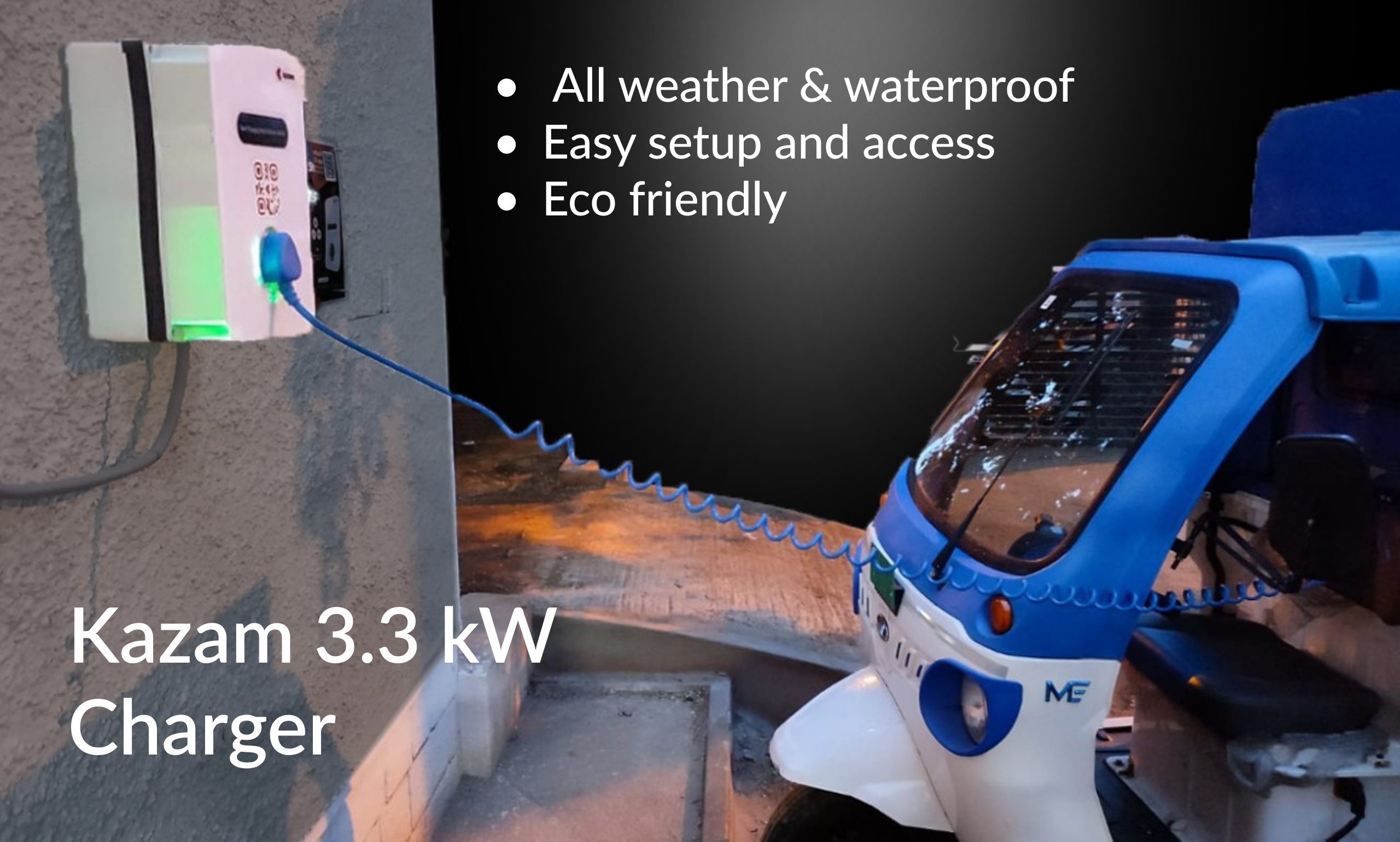
Easy Installation for Charging Stations
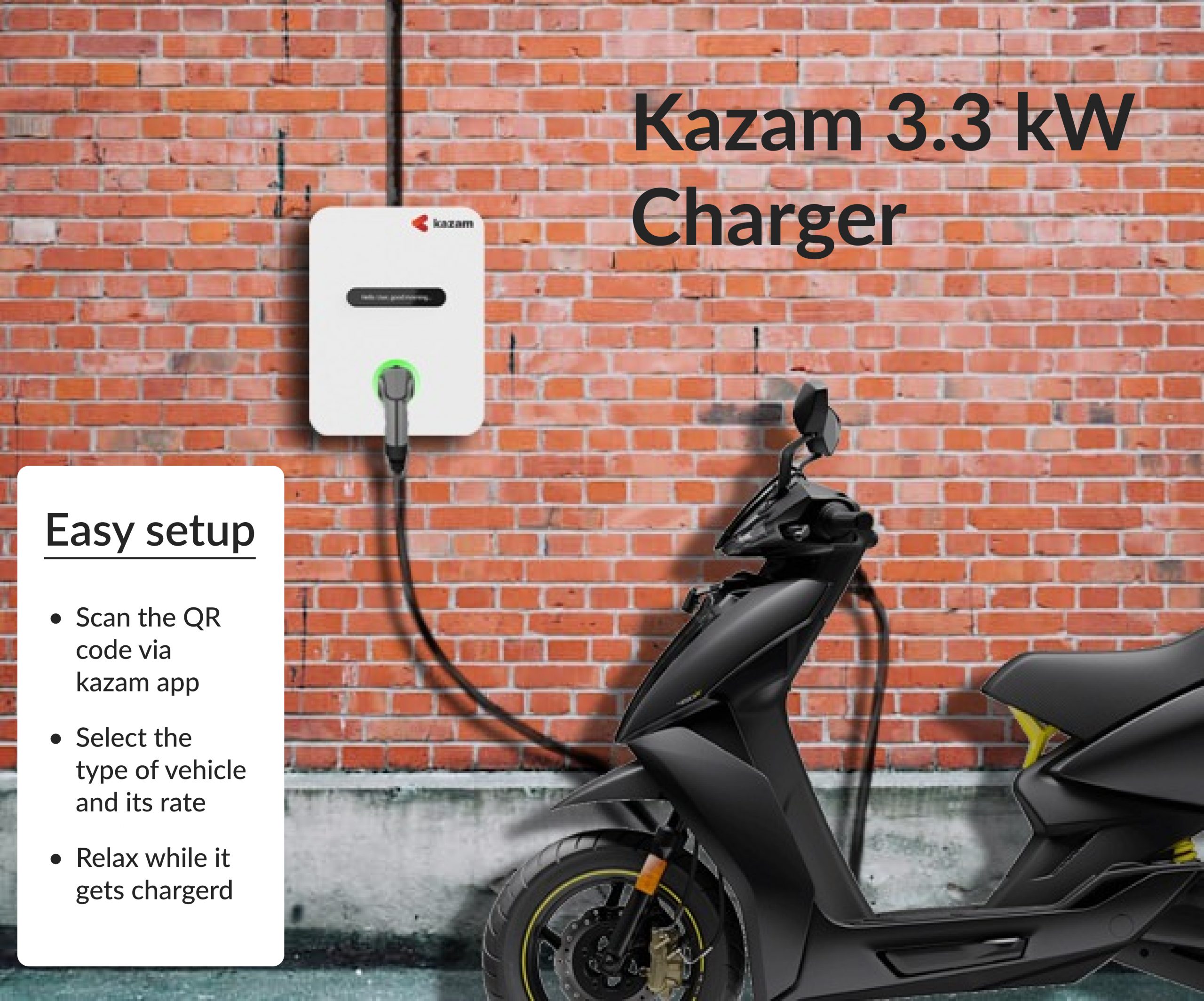
Ravdeep: So when you made this product, did you think that this is going to be another gadget that every homeowner will have installed into their houses because almost I think everyone does carry a 2 Wheeler and they will have to have this in their houses like any other gadget that they have?
Akshay: They have to have it in their house, not inside the house, but yes they need to keep it in the garage of the house and there are two ways that it is going to happen, either the builder himself will get this installed as we see a lot of attraction from builders firstly they will have to convert parking spots so that it becomes available for consumers saying that this is EV ready. The second is that the Government is creating mandates that a complete building should have at least 20% of Charging spots.
Yes, this is going to be a gadget, and we don’t want it to be limited to one person (whoever is the first adapter). I don’t want to limit him to use and grow. We want to democratize this product and anybody who wants to invest in this Product is welcomed.
Ravdeep: Would you like to share that how much we got funded recently and by what the investors?
Akshay: The recent Funding has been led by IPV- Inflection point ventures and it’s close to $1,000,000.
Ravdeep: Do we manufacture these products?
Akshay: We do manufacture these products. Our manufacturing units are in Pune and Bangalore and we can manufacture up to 10,000 pieces per month.
Ravdeep: What’s the plan for expanding outside India?
Akshay: There is a lot of scopes, going outside in there and we keep on getting invites on leads on our website and also on our call center. But we want to first crack one nut which is India and which is exactly like a subcontinent in itself, it is so big. So once we are over there and then we will have more confidence in terms of how this product will pan out and also more money in the bank account to kind of do that kind of operation. That is when we will look at going out and expand.
Ravdeep: What is the warranty period of this product?
Akshay: Generally there is a one-year warranty on the charging station and secondly we give an extended warranty option. You can extend this to up to five years with AMC. Whatever parts are there get covered onwards. The last one would be, going forward if the technology changes there would be buybacks for you to kind of upgrade these products as and when you know in the future. And then for the commercial use space, we take transaction fees. They make two people meet, which are the driver and the host. So there’s a small transaction fee that we take for enabling all of these services.
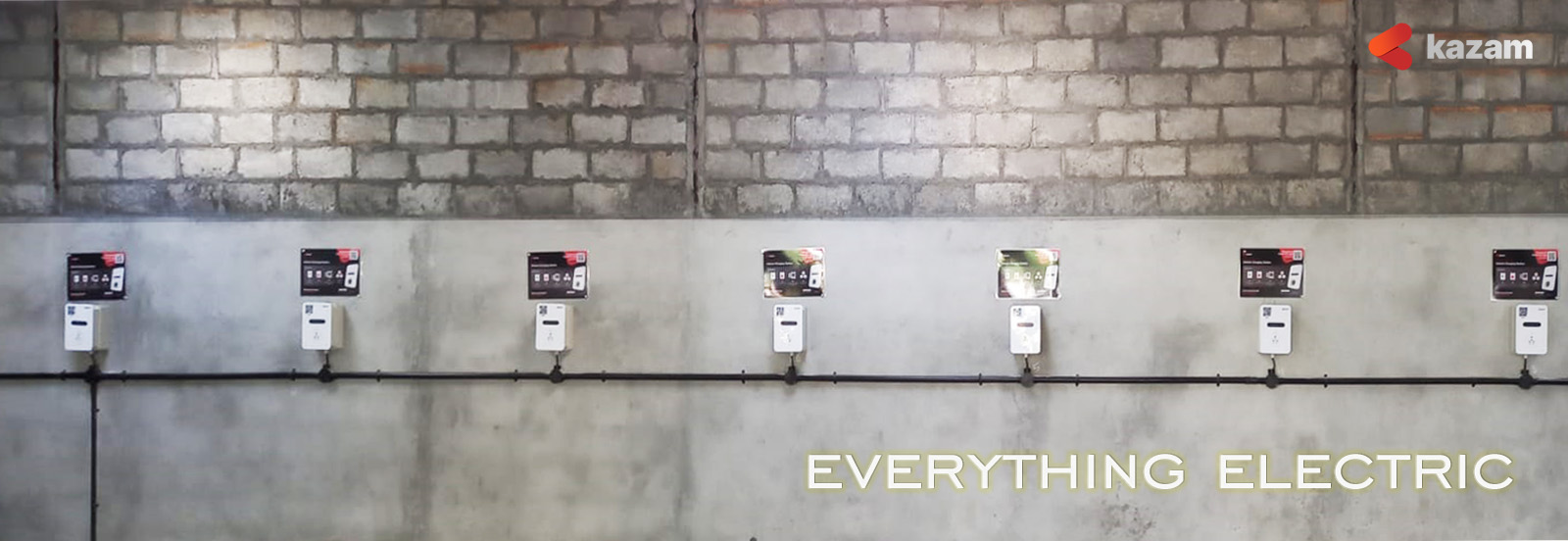
Your Vision/ Company’s Vision
Ravdeep: What is the vision and mission of Kazam?
Akshay: Our vision is to convert every parking spot into an electric vehicle, charging point and enable easy access to this so that people adapt to electric vehicles. Because they are afraid of battery discharging and where we will get it charged from, so this is the range anxiety among them. Even though people don’t drive so much. Generally, an individual will not drive more than 50 kilometers a day, and that our bike can do easily or any vehicle can do easily in a full charge, but they’re still scared. So to remove that fear so that people started opting for it very easily. So this is the vision.
Secondly, the goal is to ensure that we are giving the best product to the consumers and we will keep doing this because the technology is going to grow as much as a cell phone 20 years back you had those Nokia and Samsung phones which are feature phones and today you are using a touch screen and now you’re finally at that time where you know technology is not growing so fast in the mobile space. And the same thing will happen with this space, every one year or two years the technology is going to change and you will keep on improving your technique.
We will keep on improving the charging stations and we will be giving upgrades to our consumers so that’s the vision. So we want to give the best possible product which is available in the market to our consumers by developing it continuously as we want to be the leader in terms of development and the last one is we want to keep a tremendous user-friendly software which will give the magic trump. All of this is not possible without the software overlay on treatment, so this is what we want to do as our mission.
About the Industry
Ravdeep: What are your views about the current stage of the Indian EV Industry?
Akshay: As I already mentioned that Consumers have reachability anxiety and that is why they’re not buying Electric vehicles. And we want to stop that, we want to kill that fear. We want to educate consumers that charging an EV vehicle is like charging your cell phone.
For Example, I’m sitting at my desk and I’m charging my phone and I do this wherever I’m sitting. When I get up in the morning it is 100% charged and once I go and do my basic course, then I come back to my table and again I can plug it in to charge because till then 20-25% of the Phone battery is over. The same thing you will do with your EV, whenever you leave your apartment or your house with 100% charge. You go to your office which is 20-25 KM away and you will again plug it in and make it 100%. If you go out for lunch till the time you are having your food you can plug it again for charging in the Parking Spot. And that is the phenomenon that is going to happen. It is not like the petrol pump, that you go and wait in line and get it filled in 5 minutes. That is not the phenomenon that is going to happen. So there is a need for behavior change in this space. So this is something that we have to work on. The idea is petrol pump is not coming to your home, you will have to go-to pumps for refilling. Apparently, why do you have to go to one specific place to go in for charge? You should be able to charge everywhere. If you have the option of filling petrol at home, why would you go to the pumps?
The battery swapping is a quick fix for this because this will replicate the same behavior of filling petrol from a station. After all, you will have to go to a station for swapping. You will be replacing your battery, which is like 0-100 again in one go. So you’re replacing the behavior that was already happening with petrol and that is why you feel comfortable doing this.
People don’t accept changes overnight. For Example, when Facebook started not everybody was using Facebook. But after 10 years you can see no one can live without it or whatever all the Facebook apps or WhatsApp or Instagram, any one of them we are addicted to.
Ravdeep: According to you, what are the current challenges which you see in the EV industry in India?
Akshay: Challenges are that we are in great capacity and everything is a unique surprise. We are an energy surplus country. We produce extra electricity which we even give to our neighboring countries. So in that way, we are energy surplus and some states are even better, like Maharashtra and all these states are abundant in terms of energy. So great capacity for the next 2-3 years for all the EVs. But before the Peek comes up the government has to work, the distribution companies have to work to ensure that more electricity has to be supplied to other places as well. They will have to increase the infrastructure. So that is one challenge that they have to work on very carefully. The second is, in a few automobile sectors they are not reducing the prices even though they are having subsidies and everything. The reason is that they have very high overheads, they have already spent a lot of fixed costs, and they have to get that money out. So they are not ready to go down on prices. In the case of Petrol, they have different volumes, So when volume goes up their cost goes on variable cost. So this is where the industry is. And the third one is the raw material for lithium-ion batteries, which is very expensive. It went down drastically from 2010 till now it has come to half the price. So this will go down even further, and once that happens then you will see a lot of trend in this becoming cheaper than even petrol vehicles.
The bigger challenge is the financing. What is happening is banks and all are not financing at 9-10% which petrol vehicles were done. They are financing Electric Vehicles at 20-25% because it’s a new industry. So we are looking for a player in the market who says that they will finance this at a lower cost. It could be 11-12% but not 20%. If you’re going to do that, you’re going to kill the industry. The reason behind it is the product life cycle, they don’t know for how long an Electric vehicle will survive. They don’t know whether it is going to last for 5 years or 6 years because nobody has seen a complete cycle of the EV. So all the insurance companies have doubts if they give finance of 5 years but the EV lasted for 2 years only then that guy will stop paying for the third year. So more the risk the more percentage the finance companies are going to charge.
So till the time you have a stable technology which somebody has seen and proven it the risk will be there. you need start-ups to get into this phase and take that bet into it. Who have very less fixed overhead costs and secondly the percentage of sales of EV is too small as compared to other vehicles in the Industry due to which banks are not paying attention to this sector.
Ravdeep: How does the Indian Government support the EV industry, even during these pandemic times?
Akshay: The subsidiaries and the policies have been in place and they are driving very hard in terms of putting all of these privacy policies, these subsidiaries, and all of this in place, so they are playing their part. Petrol prices are also shooting up so it is becoming a natural catalyst too. But the execution has to be done by the private players only because the is technology has not been built by the government, there is no single entity that has built this and trying to put it in the market and it has to be a public and private combination a PVP kind of a forum where everyone should contribute and build this infrastructure. EV cars as I told you the government is pushing. But as I said the OEM’s have a few fixed overheads and also that is where it is taking a hit a bit. I think the government is doing its bit, but there’s a lot more that can be done.
We need our protocols like for example the whole country should be working on a single output, for example, if you’re using an Android phone, all Android phones today have Type C for charging your phone, but because India is developing 2 Wheelers and 3 Wheelers, so there is nothing like that everybody is using their charger designs. So we need to standardize this and secondly, we also need to standardize the software protocol. We don’t have a software protocol in the country at all. Everybody is using OCBP which is for European Countries. India it is a different country and we need a different set of protocols of software that has to be worked on. So, these are all some of the challenges.
Ravdeep: How does GST impact the EV products?
Akshay: GST has to be always borne by the end consumer. So if you’re going to charge 18% or something higher on that as in the Petrol, in that case, the end consumer has to pay out from his pocket. But in the case of an EV, they have reduced this to 5% and due to which the end consumer does have to pay much. For businesses, it is generally input or output so its impact doesn’t affect them so much. So when the end consumers have to pay less, basically the government says that I don’t want to earn so much by selling these products and want to make very minimum money out of it. So that is something which is doing very well. Secondly, some states are offering free registration. So that is another very big boost, you can imagine that in a car they are paying less around 1 lac or 50,000 and all those things that are being completely revoked. Apart from that, there is a subsidy that the government pays out from its pocket directly into the account of the person who has bought the EV. So, these are the things that the government is doing in terms of the subsidiary and everything but the challenge is that financing is too costly even if you save from all these things but you are still going to pay 24% which is way higher.
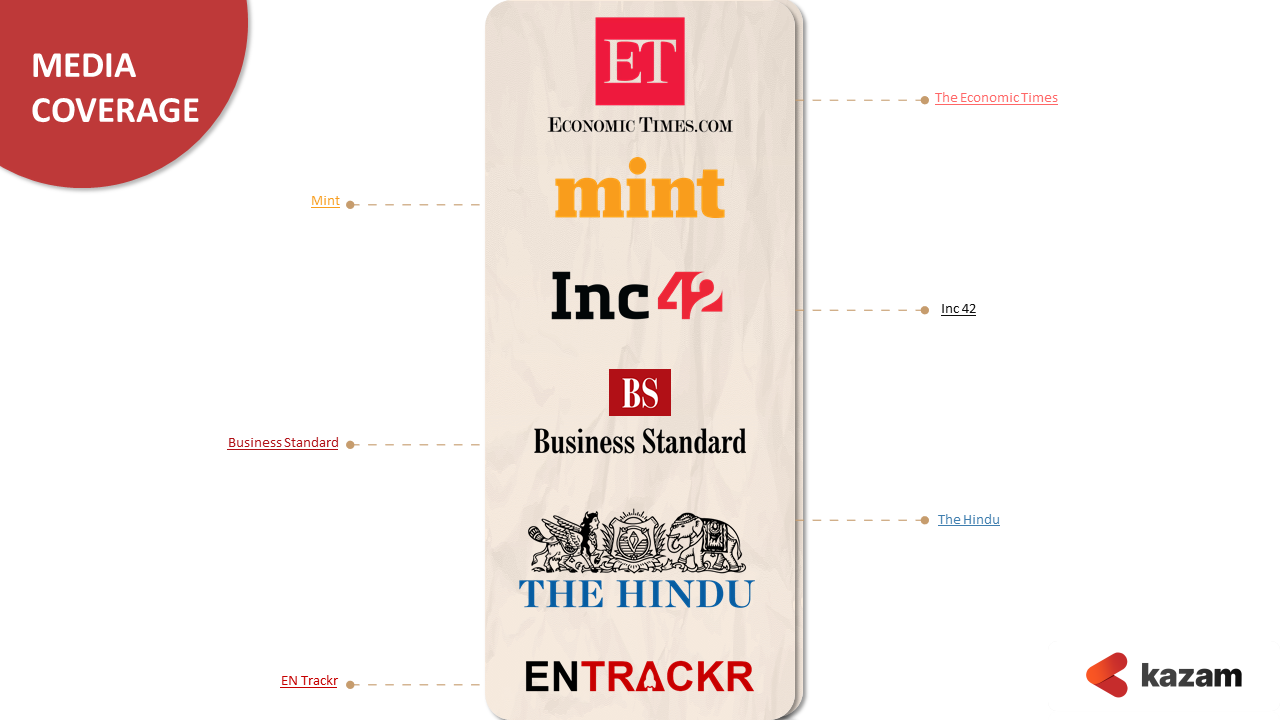
Media Presence of Kazam
6


